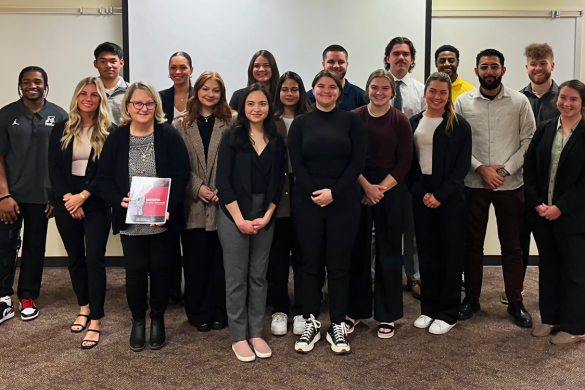Protests continue in Ukraine despite a government warning that “seizures of buildings” would be viewed as acts of terror and dealt with by national security forces, according to Radio Free Europe.
Kiev’s warning came Feb. 9, less than three months after the official beginning of what is being referred to as “Euromaidan,” which originally was created as a hashtag on Twitter to refer to the unrest across the country, beginning Nov. 21. “Maidan” is a Ukrainian word meaning a city square.

Protesters in Independence Square in Kiev, Ukraine, call for the resignation of President Viktor Yanukovich on Dec. 17, 2013. (Sergei L. Loiko/Los Angeles Times/MCT)
According to the Associated Press, on that date, Ukraine President Viktor Yanukovych announced that his government would abandon an agreement that would have strengthened relations between his country and the European Union. Instead, his government actively is seeking further cooperation with the Russian government.
According to Associate Professor of History and Political Science Milind Thakar, the Ukrainian government has adopted a “look east” policy towards Russia.
“Ukraine is divided into two parts socially. The western part of Ukraine is more Europe-facing. … The eastern part has a lot of … Russian language speakers, and they also happen to … identify with the days of the Russian empire and later the Soviet Union,” Thakar said. “Today, they are closer to the politics of President Putin of Russia.”
Thakar said that membership in the European Union would bring benefits to the people of the Ukraine, but Ukrainian journalist Taras Ilkiv told the Business Insider that the protestors are fighting more for their rights than their membership.
“After a … protest was … broken up by the police, a million angry people took to the central square of the capital,” Ilkiv said. “Most people are tired of total corruption in all spheres of life and the lack of justice and security officials’ self-will.”
Olya Mangusheva, a UIndy alumna who received her master’s degree in occupational therapy in 2011, would likely agree with Ilkiv. She has returned to Ukraine and lives in the city of Zhytomyr. Mangusheva has followed the revolution and believes that it serves several purposes.
“The Revolution of Dignity, as Ukrainians call it, is an outcry of the nation to protect human rights, to protect our dignity and to overthrow the government that has … been serving its own interests.”
To Mangusheva, it is not a matter of East or West. She said that Ukrainians need to get out of their comfort zones if they want reform.
“I support freedom and justice—Maidan and the Revolution of Dignity,” she said. “It is safe to keep your political views and opinions to yourself and live a quiet and obedient life conforming to the system. It is safe to turn the blind eye to the corrupt regime and mind your own business.”
According to reports from the Kiev Post, 1900 protesters have been injured, 234 have been arrested and 140 have been imprisoned. Meanwhile, less than 300 pro-government officers have been injured. Berkut special police units have been deployed throughout Kiev. Video evidence exists of members of this unit harassing a naked protestor before loading him into the back of their police bus.
On Jan. 30, President Obama said that financial sanctions could be imposed on the leaders of Ukraine and the protest movement if the violence continues to escalate, according to Reuters. Critics say that the West has remained too passive on the situation and would like to see more done to help the protestors.






